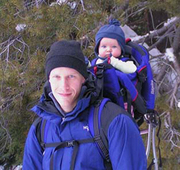Document Type
Article
Publication Title
Journal of Sport & Exercise Psychology
Publication Date
1988
First Page
363
Last Page
373
Issue Number
4
Volume Number
10
Abstract/ Summary
Bioinformational theory has been proposed by Lang (1979a), who suggests that mental images can be understood as products of the brain's information processing capacity. Imagery involves activation of a network of propositionally coded information stored in long-term memory. Propositions concerning physiological and behavioral responses provide a prototype for overt behavior. Processing of response information is associated with somatovisceral arousal. The theory has implications for imagery rehearsal in sport psychology and can account for a variety of findings in the mental practice literature. Hypotheses drawn from bioinformational theory were tested. College athletes imagined four scenes during which their heart rates were recorded. Subjects tended to show increases in heart rate when imagining scenes with which they had personal experience and which would involve cardiovascular activation if experienced in real life. Nonsignificant heart rate changes were found when the scene involved activation but was one with which subjects did not have personal experience.
Repository Citation
Hecker, Jeffrey E. and Kaczor, Linda M., "Application of Imagery Theory to Sport Psychology: Some Preliminary Findings" (1988). Psychology Faculty Scholarship. 11.
https://digitalcommons.library.umaine.edu/psy_facpub/11
Citation/Publisher Attribution
Hecker, J.E., & Kaczor, L.M. (1988). Application of Imagery Theory to Sport Psychology: Some Preliminary Findings. Journal of Sport & Exercise Psychology, 10, 363-373.
Version
publisher's version of the published document





